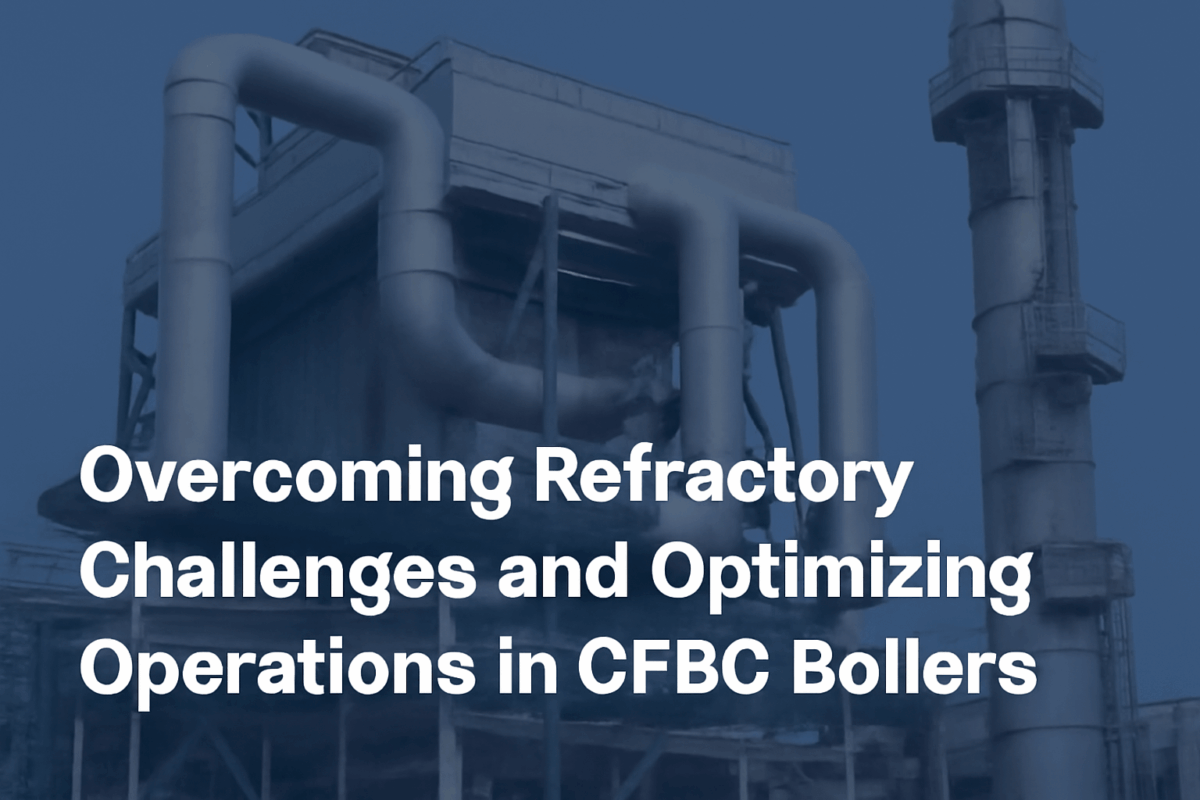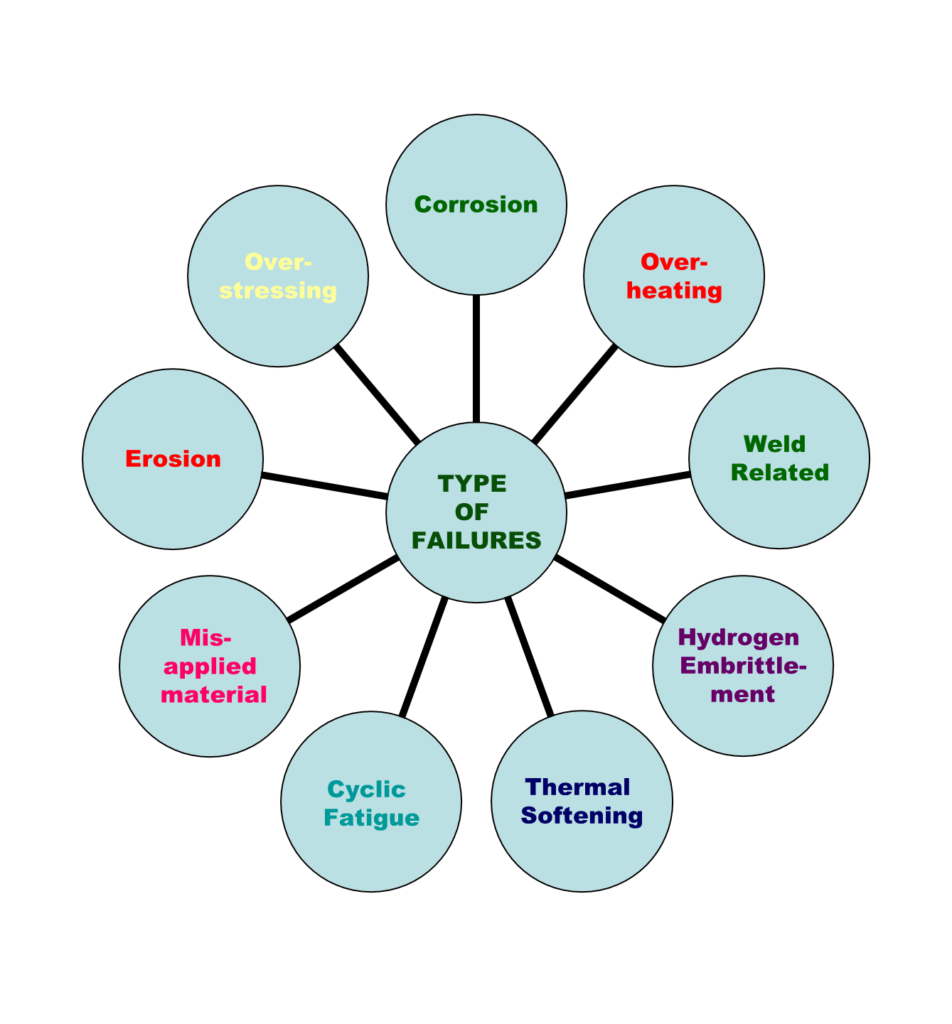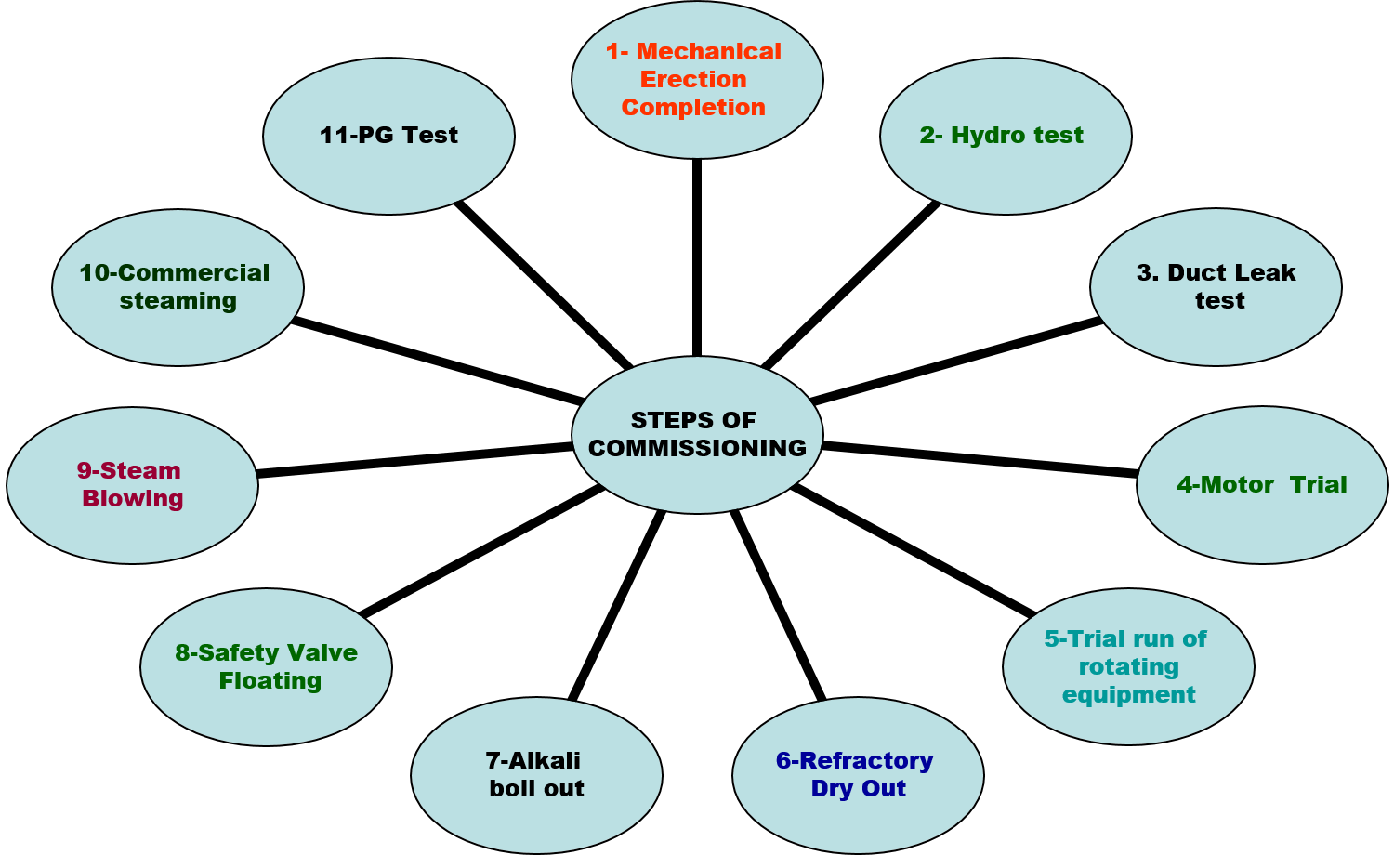As the demand for efficient and sustainable energy solutions grows, boilers using Indian coal face unique refractory challenges that can impact their performance and longevity. In this blog, we will explore the major refractory issues encountered in these boilers, effective methods to control clinker formation in Circulating Fluidized Bed Combustion (CFBC) boilers, and key operational philosophies for operating the stripper cooler.
1. Major Refractory Challenges in Boilers Using Indian Coal
Boilers firing Indian coal often experience several refractory challenges due to the unique characteristics of the coal. Let’s dive into the main issues:
High Ash Content (25–45%)
- Impact: Excessive slag formation in the furnace.
- Challenge: Slag adheres to and chemically reacts with refractories, causing erosion and corrosion, especially in furnace walls, burner tiles, and slagging zones.
Low Ash Fusion Temperature
- Impact: Causes early slag melting at boiler operating temperatures.
- Challenge: Molten slag can attack the refractory lining, particularly in secondary combustion zones.
Alkali and Sulphur Compounds
- Impact: Presence of sodium, potassium, and sulphur compounds in ash.
- Challenge: These compounds react with silica/alumina refractories, causing chemical degradation and spalling, especially in superheater and economizer zones.
High Abrasiveness
- Impact: Mineral particles in coal ash are sharp and hard.
- Challenge: These particles cause mechanical wear of refractories in cyclones, ducts, and ash hoppers.
Thermal Shock Due to Load Fluctuations
- Impact: Frequent start-stop cycles due to variable coal quality and grid demands.
- Challenge: Causes cracking and delamination of refractory linings, especially in burner throats and boiler front walls.
Poor Ash Handling
- Impact: Accumulated ash can lead to localized overheating.
- Challenge: Promotes hotspot formation, which accelerates localized refractory failure.
Mitigation Strategies:
- Use high alumina, silicon carbide, or chrome-containing refractories for slag-resistant zones.
- Install expansion joints and use insulating layers to manage thermal stress.
- Perform regular inspections and maintenance for early detection of wear.
2. Effective Methods to Control Clinker Formation in CFBC Boilers
Clinker formation inside the loop seal of a CFBC boiler can disrupt ash recirculation and boiler efficiency. Here’s how to control it:
1. Maintain Proper Loop Seal Temperature
- Cause: High temperatures cause ash to partially melt and form clinkers.
- Control: Keep the loop seal temperature below 850°C, depending on the ash fusion temperature of the fuel. Use temperature sensors and cooling air or fluidized bed cooling if needed.
2. Ensure Adequate Fluidization
- Cause: Inadequate fluidization leads to dead zones where ash settles and sinters.
- Control:
- Ensure uniform and sufficient airflow through loop seal nozzles.
- Prevent nozzle blockages and monitor air pressure and flow balance.
- Ensure uniform and sufficient airflow through loop seal nozzles.
3. Use of Inert Material/Sand Addition
- Benefit: Helps maintain fluidized bed activity and dilutes ash stickiness.
- Control: Periodically add coarse inert material (like sand or coarse ash) to prevent clinker formation.
4. Control Bed Inventory and Ash Recirculation Rate
- Cause: Overloading the loop seal with hot ash increases sintering risk.
- Control: Monitor and maintain optimal bed height, loop seal level, and ash return flow.
5. Avoid High Sulphur and High Alkali Fuels Without Additives
- Cause: These fuels promote sticky ash and low-temperature slag formation.
- Control: Use additives like limestone or dolomite to neutralize sulphur and prevent ash sintering.
6. Regular Mechanical Cleaning/Flushing
- Control: If clinkering persists, schedule offline flushing or rodding of loop seal internals to remove the build-up.
7. Design Considerations
- Ensure the loop seal design allows for uniform fluid distribution, easy access, and provisions for ash cooling.
3. Operational Philosophies for Operating the Stripper Cooler in CFBC Boilers
The stripper cooler plays a crucial role in CFBC boilers by cooling and regulating the recirculating hot bed material. Efficient operation of this component is vital for combustion stability, ash handling, and preventing clinker formation. Here are the key operational philosophies:
1. Maintain Stable Fluidization
- Objective: Ensure uniform mixing and prevent hot spots or channeling.
- Action: Provide consistent and balanced fluidizing air and prevent nozzle choking.
2. Control Bed Temperature
- Objective: Prevent ash melting and clinker formation.
- Action: Maintain bed temperature between 800–850°C, below the ash fusion point. Use cooling air and adjust ash withdrawal rate.
3. Avoid Full Emptying of Stripper Cooler
- Why: Completely emptying the stripper cooler leads to sudden inflow of high-temperature ash, which can burn independently and cause overheating and clinkerization.
- Action: Always maintain a minimum bed level for controlled heat dissipation and mixing.
4. Control Inflow of Hot Ash via Mobilizing Line
- Why: Unchecked inflow from the mobilizing line causes temperature spikes inside the stripper section.
- Action: Throttle the mobilizing line or control its valve to regulate the rate of ash entry and maintain stable temperatures.
5. Optimize Heat Recovery
- Objective: Maximize sensible heat recovery from solids.
- Action: Maintain clean cooling surfaces in water-cooled strippers and prevent ash build-up to improve heat exchange efficiency.
6. Monitor Differential Pressure
- Objective: Early detection of choking or fluidization issues.
- Action: Regularly track differential pressure trends and investigate any abnormal fluctuations.
7. Regulate Solids Recirculation
- Objective: Avoid clogging and uneven ash return.
- Action: Ensure consistent ash flow through loop seals and the stripper. Maintain even solids loading to prevent dead zones.
8. Gradual Start-up and Shutdown
- Objective: Avoid thermal shocks and clinker formation.
- Action: Gradually increase temperature and airflow during start-up and maintain fluidizing air until the bed cools down sufficiently during shutdown.
9. Prevent Overloading
- Objective: Avoid excessive bed height and internal pressure buildup.
- Action: Operate within design bed inventory limits and prevent dumping excessive hot ash.
10. Visual and Ash Quality Checks
- Objective: Identify early signs of clinker formation.
- Action: Periodically check ash discharge quality for signs of lumps or sintering.
4. Reducing Unburnt Carbon in Bottom Ash of AFBC Boilers
Reducing combustibles in the bottom ash of an underfeed-type AFBC boiler is critical for improving combustion efficiency and reducing fuel loss. Here’s how you can achieve it:
1. Improve Fuel Fineness
- Why: Coarse particles leave unburnt carbon.
- Action: Ensure proper coal grinding (target 90% passing through 200 mesh if feasible) and avoid oversized fuel particles.
2. Optimize Bed Temperature
- Why: Low bed temperatures lead to incomplete combustion.
- Action: Maintain bed temperature between 800–850°C, depending on coal type. Monitor temperature uniformity with thermocouples at multiple bed locations.
3. Ensure Uniform Air Distribution
- Why: Poor fluidization leads to unburnt coal pockets.
- Action: Balance primary airflow and inspect air nozzles regularly to avoid blockage.
4. Improve Fuel and Bed Material Mixing
- Why: Poor mixing results in localized burning and fuel escape.
- Action: Maintain adequate bed height and proper bed material size (1–3 mm). Consider replacing part of the bed material periodically.
5. Regulate Fuel Feed Rate
- Why: Excessive fuel feed overwhelms combustion capacity.
- Action: Synchronize fuel feed with air supply and adjust based on oxygen sensor feedback.
6. Secondary Air Injection (if available)
- Why: Enhances burnout of volatiles and fine particles.
- Action: Inject secondary air above the bed level and adjust based on CO and O₂ readings.
7. Monitor and Optimize O₂ and CO Levels in Flue Gas
- Why: High CO or low O₂ indicates incomplete combustion.
- Action: Keep O₂ levels between 3–6% and CO below 100 ppm. Adjust the air-fuel ratio as needed.
8. Regular Ash Sampling and Analysis
- Why: Helps track combustion trends.
- Action: Perform Loss on Ignition (LOI) tests on bottom ash regularly and fine-tune operational settings based on results.
Conclusion
Addressing the refractory challenges associated with Indian coal and implementing effective operational strategies in CFBC boilers is crucial for optimizing performance. By controlling clinker formation and ensuring the proper operation of components like the stripper cooler, boiler operators can enhance efficiency, reduce maintenance costs, and extend equipment lifespan. Continuous monitoring and strategic adjustments will ultimately lead to safer and more reliable boiler operations.



